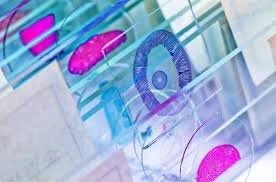Recently, biospecimens have definitively gained their place as essential building blocks for advancing biomedical research. However, there is still some lack of understanding of their full potential, regulatory requirements, and collections design. Biopharmaceutical research is progressing and becoming more sophisticated. At the same time, biosample collection is growing more complex. Considering earlier collection projects, we can better understand the critical role collections play in advancing biomedical research, especially how biomarker development can help meet unmet medical needs.
Biospecimen Procurement Challenges
Precision medicine requires being able to identify informative and specific biomarkers. Biospecimens are a critical component of discovering, developing, and validating biomarkers. Precision oncology’s hurdles can mostly be tracked back to biosamples used for research purposes. Solving the challenges with biospecimen procurement will directly address many of the limitations faced during the research and development processes. One challenge that must be addressed is the lack of geographical and ethnic diversity in biospecimen collection. One solution is to expand the geographic presence and network of clinical sites. Another aspect affecting biospecimen collection efforts is the fit-for-purpose element. Procuring samples insists that there be a deep understanding of the current trends in research and how they may be reflected in procurement requests for biospecimens. Trends should be analyzed annually to gain insight and understanding.
Analysis of Previous Biospecimen Collection
It’s equally important to analyze collection processes. For instance, many projects collect matched biospecimen sets. Matched specimens are numerous samples taken from a single donor. The classification of the biospecimens may differ, meaning biospecimens may be obtained from blood and PBMCs, blood and tissue, etc. Or it may be the same type of biospecimen obtained at different times or conditions, such as pre or post-treatment, pre or post-surgery, etc. Additionally, it may be the same type of tissue, such as blood or solid tumor tissue, just stored or processed in a different way. For example, collected solid tissue may be in FFPE and flash formats, PBMCs and plasma samples, or in FFPE and fresh tissue samples. The increased requests for matched biosamples such as these indicate a new sophistication in biomedical research.
For many biobanks, the requests for matched sample collections commonly consisted of solid tumor tissue matched with a patient’s blood sample. This latest trend in biospecimen collection aligns with the latest increase in interest in liquid biopsy test development. The goal is for scientists to find ways of accurately detecting and measuring tumor signatures through a simple patient blood sample. This may also explain why blood plasma is one of the most requested biosamples.
Trends in Biospecimen Formats
Researchers are interested in various preservation formats, depending on the specifics of the research project. Recently, the complexity of combinations is trending. This is likely due to the increase in complexity of biomarker studies. The most requested formats include matched blood and tissue collection, FFPE from tumor tissues along with normal adjacent tissue FFPEs, and blood plasma and PMBCs. Cancer research is reaching for answers, and success depends largely on biospecimens and samples. The three most popular tissue types used for cancer research are colorectal, lung, and breast.
Sample Collection and Urgent Oncology Needs
According to recent statistics provided by the World Health Organization, cancer is one of the leading causes of death globally. The most common new cases of cancer in 2020 included:
· Breast cancer with 2.26 million new cases reported
· Lung cancer with 2.21 million new cases reported
· Colon and rectum cancer with 1.93 million new cases reported.
Research increases in areas of breast, lung, and colon cancers, and much of the results rely on quality biospecimen availability. This explains the uptick in the number of biospecimen requests. One issue with the research efforts thus far is the lack of projects requesting ethnicity data. Raising awareness of this issue is paramount as scientific research advances. Improving the sensitivity and specificity of lung cancer liquid biopsy tests are urgently needed. Lung cancer remains the most lethal cancer around the world, but it is also typically in the late stages before it is detected. Other types of cancers are detected easier in earlier stages. To date, there are only two FDA-approved liquid biopsy tests for lung cancer, which further stresses the urgent need for more efforts in this area.
Final Thoughts
Biospecimen collection is essential to modern scientific research and is helping medical research advance faster than ever before. Biobanking and specimen collection are changing rapidly in response to increasing demands. Personalized medicine and treatment options rely on the advancement of biospecimen research.
Resources:
https://www.who.int/news-room/fact-sheets/detail/cancer
https://www.cancer.gov/types/lung/research
https://www.mdanderson.org/cancer-types/lung-cancer/lung-cancer-research.html
https://www.cancer.org/cancer/colon-rectal-cancer.html
https://molecular-cancer.biomedcentral.com/articles/10.1186/s12943-022-01543-7






